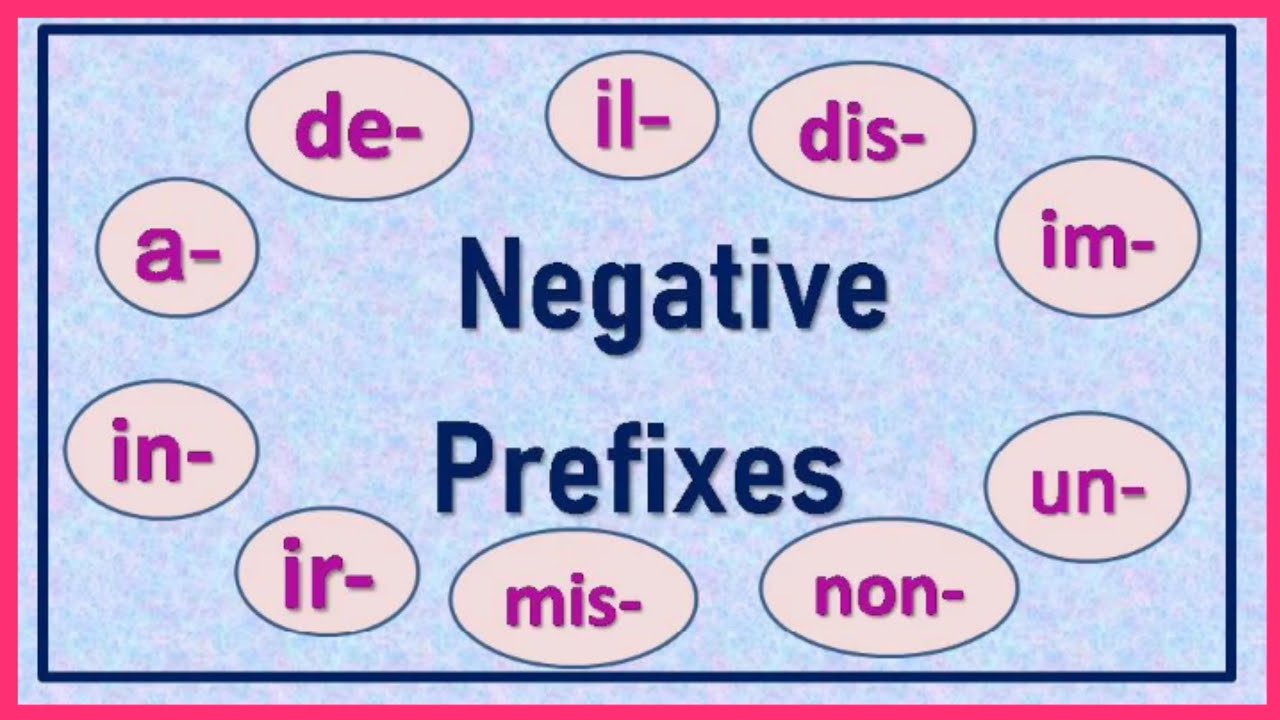Negative Prefixes
Have you ever wondered how a single word can change its meaning completely with just a small addition? Imagine you’re reading a social media post or listening to a conversation, and you come across words like “happy” and “unhappy.” That tiny prefix, “un-,” turns a positive word into a negative one! In this lesson, you’ll explore the world of negative prefixes. You’ll learn how they work, how they can change the meaning of words, and how to spot them in everyday language. By the end of this lesson, you’ll be able to recognize and use negative prefixes confidently in your conversations, reading, and writing.
Content

Negative prefixes are small but powerful additions to words that change their meaning to the opposite. Common negative prefixes include “un-”, “in-”, “im-”, “il-”, “ir-”, “dis-”, and “non-”. For example, adding “un-” to “happy” makes “unhappy,” which means not happy. These prefixes are useful in everyday language to express negation or the opposite of something.
In the following video, you will learn more about this topic:
Look deeper into this topic in the following presentation:
Examples and Applications
- Social Media Post: “I’m really unhappy with the new update.”
- Conversation with Friends: “It’s impossible to finish this game in one day.”
- Personal Opinion Article: “The decision was unfair and disappointed many people.”
- Informal Chat: “That’s an inconvenient time for me. Can we meet later?”
- Texting: “I think it’s unlikely that the event will be canceled.”
Learning Activities
These activities will help you apply what you’ve learned throughout this lesson:
Prefix Sorting Relay
The class will be divided into teams. Each team will be provided with a set of word cards, some with negative prefixes and some without. On the board, there will be columns labeled with different negative prefixes (e.g., “un-“, “dis-“, “in-“). The teams will race to sort their word cards into the correct columns on the board. The fastest team to sort their words correctly wins Krugs for their members.
Prefix Pictionary
In this variation of Pictionary, you will draw the meaning of a word with a negative prefix, and your team members must guess the word. For example, if the word is “disappear,” you might draw something vanishing. This activity combines creativity with vocabulary practice.
Opinion Article Writing
Objective: Use negative prefixes to express opinions in writing.
Instructions: Students will choose a topic they feel strongly about (e.g., school rules, environmental issues) and write a short opinion article using at least five words with negative prefixes. For example, “It’s unfair that students are not allowed to…” They will then share their articles with a partner for feedback, focusing on the correct use of negative prefixes and the clarity of their argument.
